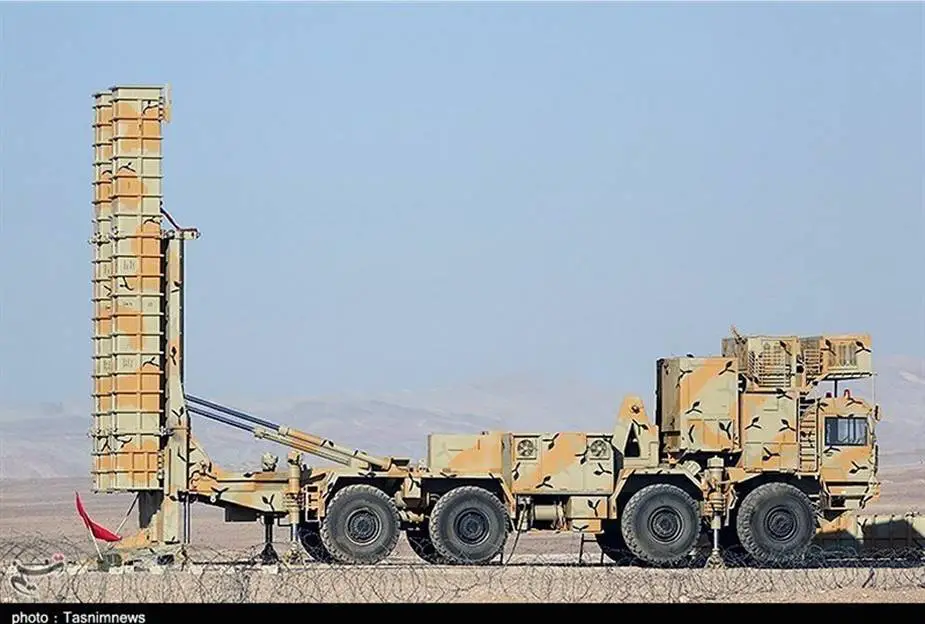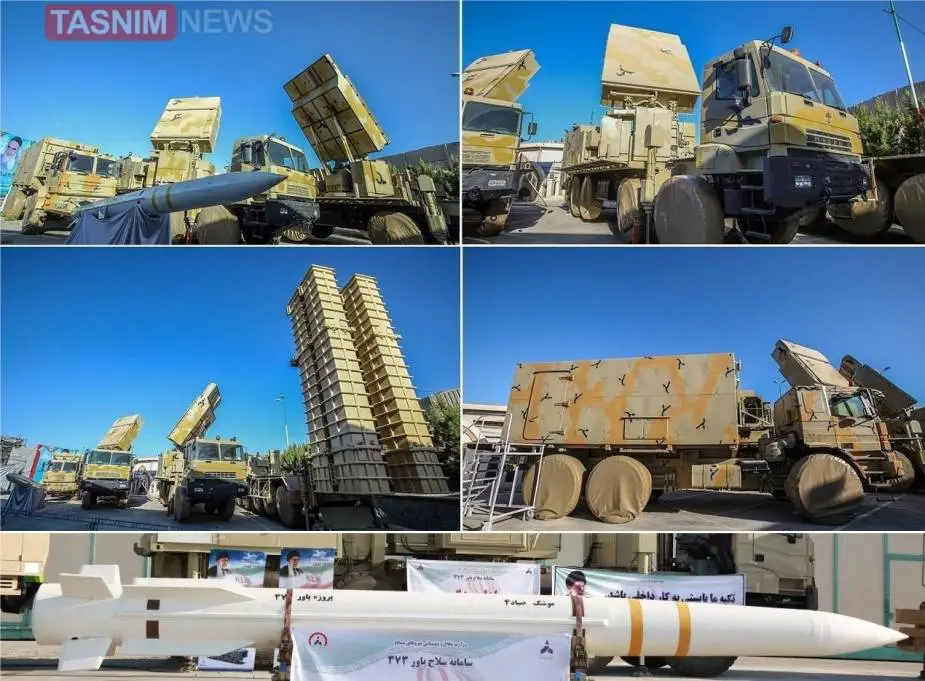According to information published by "Newsweek" magazine on January 10, 2023, Iran has deployed in Syria its latest generation of air defense missile system called Bavar-373 to counter aerial attacks from Israel as well as the stealth fighter aircraft F-35.
Follow Army Recognition on Google News at this link

TEL Transporter Erector Launcher vehicle of Iranian-made Bavar-373 air defense missile system. (Picture source TasnimNews)
Citing information from the Iranian defense industry the Bavar-373 will be able to detect and destroy stealth fighter aircraft such as the American F-35. The radar of the Bavar-373 has a detection range from 400 to 500 km, a tracking range of 200 km maximum, and a 360-degree azimuth.
Citing information from Newsweek magazine, over the past two years the Israeli air force has carried out several aerial attacks on Syrian territory including in Palmyra and Tartus in October 2021, Latakia in December 2021, Damascus in March 2022, an additional strike in Tartus in July 2022, and two strikes in Homs in November and December of 2022.
In recent years, Iran has improved its conventional forces and seeks new capabilities. Iran’s latest 5-year development plan continues priority for missiles, naval forces, and air defenses, but it also adds a new emphasis on combat air power and EW (Electronic Warfare) capabilities.
Iran will modernize its Air Defense Forces with new air surveillance radars, SAMs, and command, control, communications, computers, intelligence, surveillance, and reconnaissance (C4ISR) systems.
The Iranian air defense forces operate Iran’s most capable air defense missile system, the SA-20C an export version of the S-300PMU2, which Russia sold to Iran in 2016. This system is highly mobile and designed to defend against aircraft, ballistic missiles, and cruise missiles. Iran is most likely to use the SA-20C to protect its most critical infrastructure, such as its nuclear sites and Tehran. Iran also uses other SAMs (Surface-to-Air Missiles) including a mix of U.S., Russian, and Chinese legacy systems, including the long-range SA-5, medium-range I-HAWK, and CSA-1 SA-2 Guideline, and short-range SA-15 and Rapier.
Iran has also developed locally the long-range air defense missile system Bavar-373 SAM system, which it claims is more advanced than the Russian S-300. The first prototype of the Bavar-373 was built on 22 November 2011 and it was formally unveiled during a ceremony attended by Iranian President Hassan Rouhani on 22 August 2019.

The Bavar-373 can fire the Sayyad-4B surface-to-air missile designed to engage and intercept incoming aerial targets at ranges of up to 300 km, and at an altitude of up to 120 km. (Picture source Tasnim News)
The Bavar-373 is an air defense missile system designed to detect and intercept incoming missiles, drones, and aircraft at long ranges and high altitudes, and is intended to protect Iranian territory and strategic assets from air and missile attacks. The system reportedly uses a combination of radar, optical sensors, and command and control systems to detect, track, and intercept targets.
The system is said to include several different assets and components, including TEL (Transporter Erector Launcher) vehicles, Meraj-4 road-mobile S-band early warning 3D AESA (Active Electronically Scanned Array) radar, acquisition radar, and command post. The system may also include other assets, such as optical sensors, cameras, and data link systems that are used to support the detection and tracking of targets.
The Bavar-373 is able to launch the Iranian-made Sayyad-4B which is an upgraded version of the Sayyad-4 missile a two-stage, solid-fueled interceptor missile. The missile is designed to engage and intercept incoming aerial targets at ranges of up to 300 km, and at an altitude of up to 120 km.
The Sayyad-4B missile reportedly features an improved seeker, a new guidance and control system, and an advanced warhead. These improvements are intended to increase the missile's range, accuracy, and effectiveness against a wide range of targets, including cruise missiles, drones, and aircraft.















